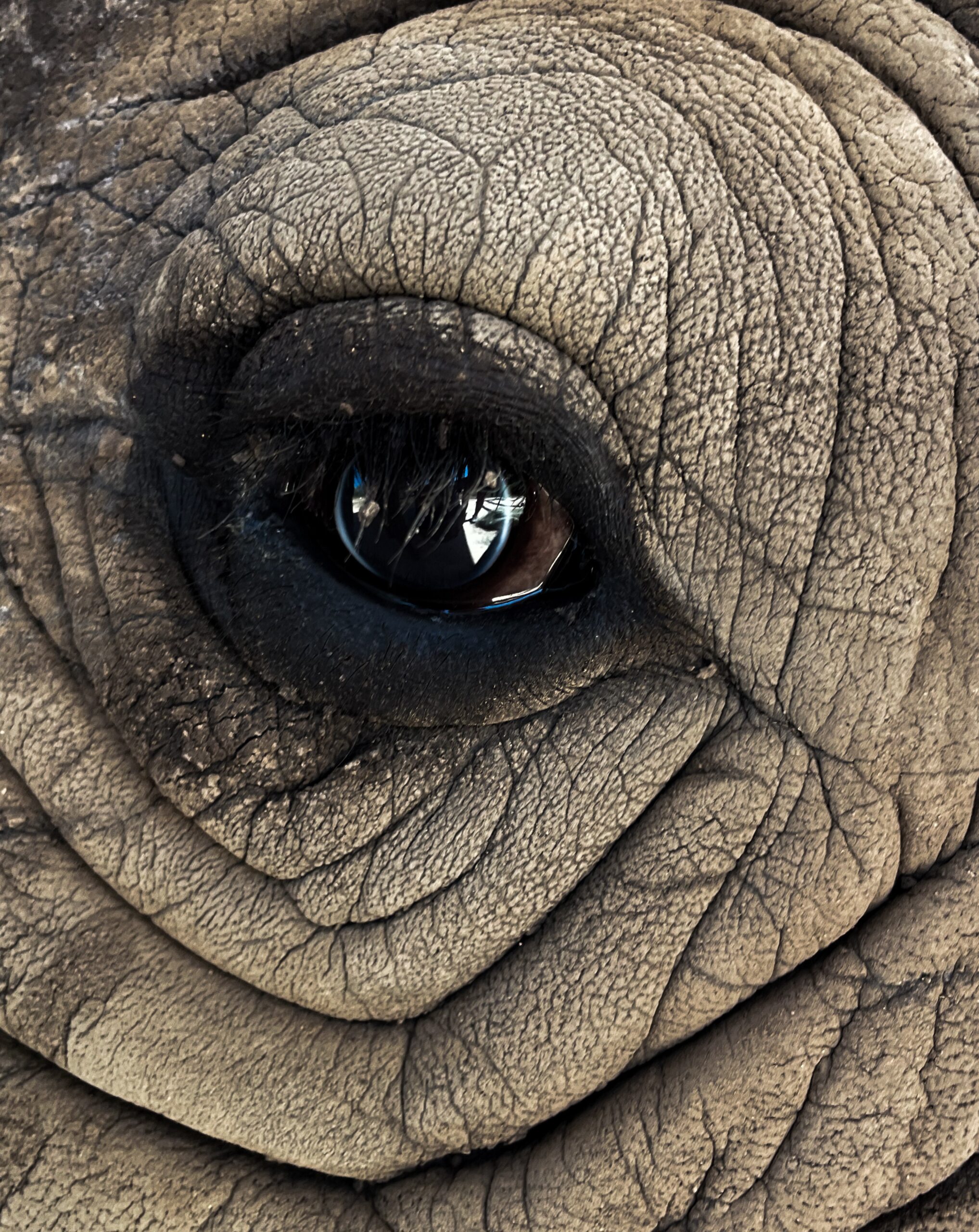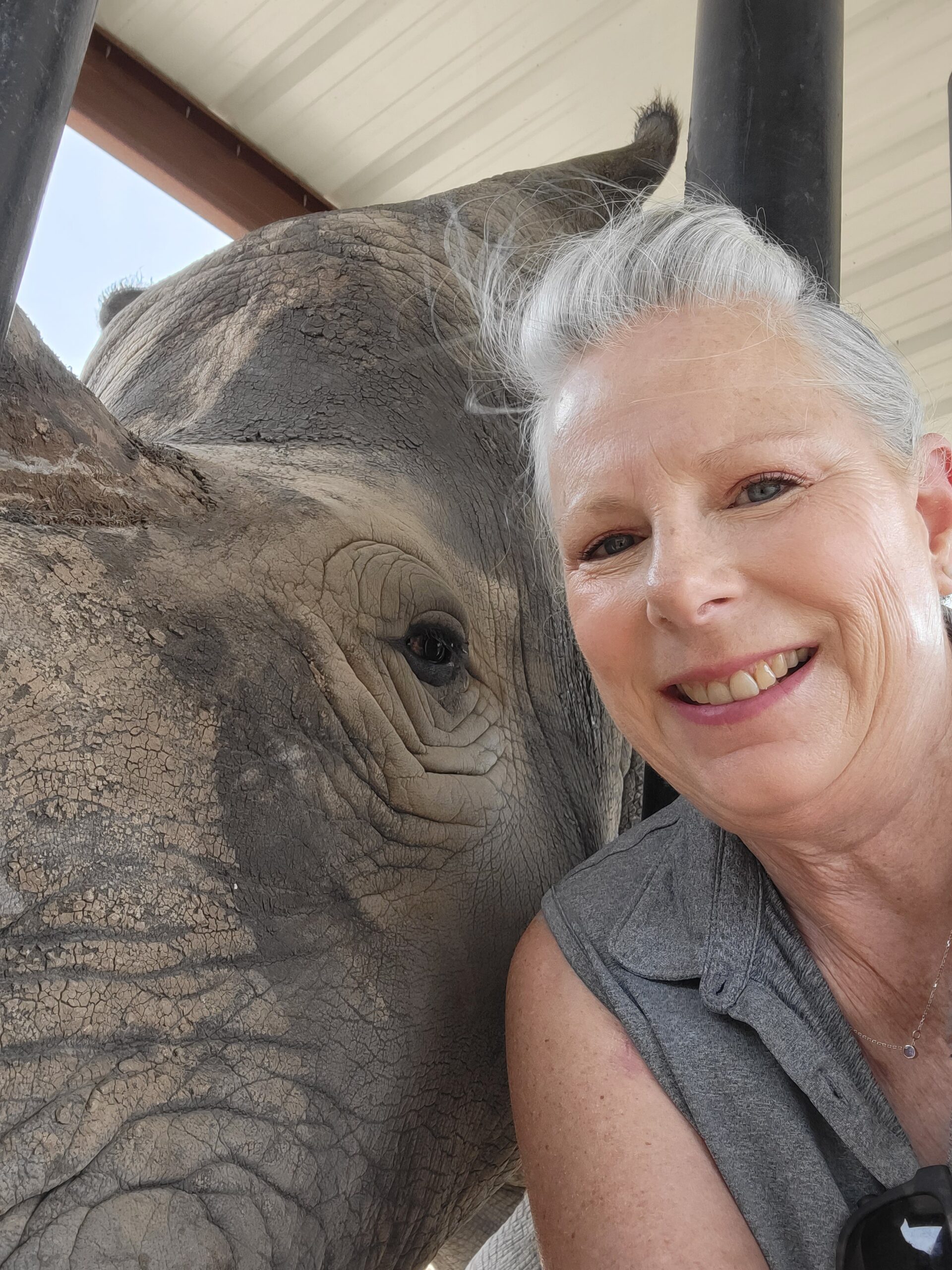RHINO RESERVE at RHINORY
Discover a Unique Hill Country Experience
at Rhinory’s Rhino Reserve
Escape the ordinary and step into a world where wine and wildlife intertwine. Nestled on 55 acres of breathtaking Texas Hill Country, Rhinory offers a one-of-a-kind experience that blends the pleasure of fine wine with the thrill of encountering a majestic rhino.
Our picturesque property, bordered by the Pedernales River and graced by a meandering creek, provides a haven for diverse wildlife, including our resident Southern White Rhino, Blake. Designed with both visitor enjoyment and rhino well-being in mind, our spacious habitat offers ample opportunities to observe this incredible creature up close.
Whether you’re sipping award-winning wines on our patio, relaxing under the shade of ancient oak trees, or strolling along our viewing paths, you’ll be captivated by the beauty of our surroundings. Every vantage point offers a front-row seat to the daily life of Blake, from leisurely grazing to playful interactions.
Join us for an unforgettable experience that nourishes the senses, supports rhino conservation, and celebrates the remarkable biodiversity of the Texas Hill Country.

OUR RHINO
The Inspiration Behind The Label

Meet Blake, Our White Rhino
Blake, our resident Southern White Rhino, is a charismatic ambassador for his species. Weighing in at a mighty 4,000 pounds, he’s sure to impress you with his size and presence. But don’t let his bulk fool you – Blake is a gentle giant, known for his calm demeanor and love of grazing.
As part of a rhino survival and breeding program, Blake plays an important role in rhino conservation. Rhinos across the globe face threats like poaching and habitat loss. By supporting Blake, you’re directly helping to ensure a future for these magnificent creatures. Here at Rhinory, he enjoys spacious pastures, a refreshing watering hole, and the care of our dedicated rhino keepers.
Want to learn more about rhinos and their fight for survival? Come visit Blake and see him up close! You might even catch him munching on his favorite treats or taking a relaxing mud bath. Your visit contributes to his care and supports the broader mission of rhino protection.
OUR RHINO TEAM
Christine Bobko, Director of Rhino Programs
Christine Bobko, our Director of Rhino Programs, started her career and passion for rhinos at the San Antonio Zoo. She then headed to the Denver Zoo where she spent the next 32 years working with Black and Greater One Horned Rhinos. Over the course of her career, she has worked with many species from Koalas to Asian Elephants, but rhinos were always her passion. In 2022, she retired from the Denver Zoo when the owners of the Rhinory offered her the opportunity to grow and develop several programs including breeding, conservation, and guest engagement. Her retirement would now be wine and rhinos!
Another key passion for Chris is rhino conservation. Her work has taken her to Africa several times and Indonesia for two of the rarest species – Sumatran and Javan rhinos. She also has developed and directed multiple successful fundraisers that have raised over $250,000. As a founding board member and President of the International Rhino Keeper Association she is currently Chair for fundraising and has served several key roles including development of two bi-annual workshops.

Kristen Rockey
Kristen grew up in Sayreville, N.J. where she enjoyed visiting the beach and local zoos. She has worked in the zoo industry since 2014 and has experience working with many different species. Some of her favorites are big cats and birds. Kristen has been with the Rhinory since Blake arrived, and when she met him, it was Love at first sight.
Kristen has a strong educational background and has presented with a variety of animals. While living in Utah, she visited many schools teaching about the environment and animals. She believes that education can help with the conservation of species.
She is also a member of the International Rhino Keeper Association. One day she hopes to visit Africa and volunteer with orphaned rhinos.
Mary Fields
Mary is originally from Houston and has been a keeper since 2014, with rhinos being the species she’s worked with the longest. Her love for rhinos all stemmed from her first internship in 2011 with three southern white rhinos at the Houston Zoo. Blake is now Mary’s 10th southern white rhino that she has worked with.
Conservation is one of Mary’s passions. She has held several special events to help different species throughout her career and traveled to learn about conservation. She has also focused on animal behavior, including training with positive reinforcement, and building new enrichment, like Blake’s log chimes that he likes to scratch on!
She is also a member of the International Rhino Keeper Association. One day she hopes to visit Africa and volunteer with orphaned rhinos.
Rhino Facts
White Rhino Size & Growth
White rhino and equally sized greater one horned rhino are the 2nd largest land mammals after the elephant. Male white rhinos have the capacity of reaching up to 6,000 lbs. upon maturity and females typically are between 4,200 – 4,500 lbs.
North & South White Rhinos
There are 2 distinct species of white rhino – southern and northern. Northern white rhinos are now considered functionally extinct in the wild due to poaching. Only two females remain and are considered non-reproductive. They live in a sanctuary in Kenya, and are guarded 24 hours a day by armed rangers.
Wyd Rhino
The name white rhino has nothing to do with the actual color of the animal. Most rhinos are a grey/brown in coloration with the exception of the Sumatran rhino which are a reddish brown. White is taken from the Afrikaans word “Wyd” which was misinterpreted by the English settlers as “white”.
Wide Lips
White rhino lips are powerful and broad that enable them to crop grass closely. Because of these wide lips white rhinos are strictly a grazing rhino. Their diet consists of grasses found on the savannas and grasslands of Africa.
Titan Toes
Another unique feature of rhinos is their feet! Rhinos are considered toe-walkers and are in the Order Perissodactyla or odd toed ungulates. If you looked at a rhino’s skeleton, their body ends on three toes. The pad on the bottom of the rhino’s foot acts like a shock absorber that allows for equally distribution of their large weight.
Faster Than an Elephant
Rhinos can also MOVE IT! Don’t let their large size fool you! A rhino can get up to speeds of 30 miles per hour and maintain that speed over a mile. They are very nimble and quick on those feet as well – spinning and turning on a dime.
Blind as a Rhino
Most things about a white rhino are supersized, except for their vision. Due to poor eyesight rhino are often labeled as mean and cantankerous animals. Objects farther than 100 yards, a rhino often sees them as blur. If they hear or smell a threat, rhinos will often charge first and ask questions later.
Think Thick
Rhinos are considered pachyderms, which means “thick skinned” animal. Elephants, rhinos, hippos and tapirs are all pachyderms. A rhinos skin can be anywhere from an inch to inch and a half thick on most areas of their body. Rhinos can’t sweat to cool their bodies, so mud is incredibly important to keep them cool, bug free and acts as a natural sunscreen.
Rhinos Subtle Accessory
A rhino’s horn is the most special feature of this animal! It’s what makes a rhino a rhino! It’s is not bone, but modified keratin the same basis as our hair and nails. It will continually grow throughout the rhino’s lifetime. Of 5 species of rhino, only two species the Greater One Horned rhino and Javan only have one horn while White, Black and Sumatran have 2 horns. A baby rhino is born with a tiny little bump that will start to grow into horn around 3-4 months of age.
Slow-Mo Maturity
It takes a long time for a rhinos to mature. Males typically are sexually mature between 7-8 years old, and females between 5 to 7 years. Rhino gestation is a long 16 months and calves will stay with their mother for 2 -3 years. Calves are born between 12- -140 lbs. and will gain 2 to 3 lbs. per day on their mother’s milk.
 830-992-9526
830-992-9526